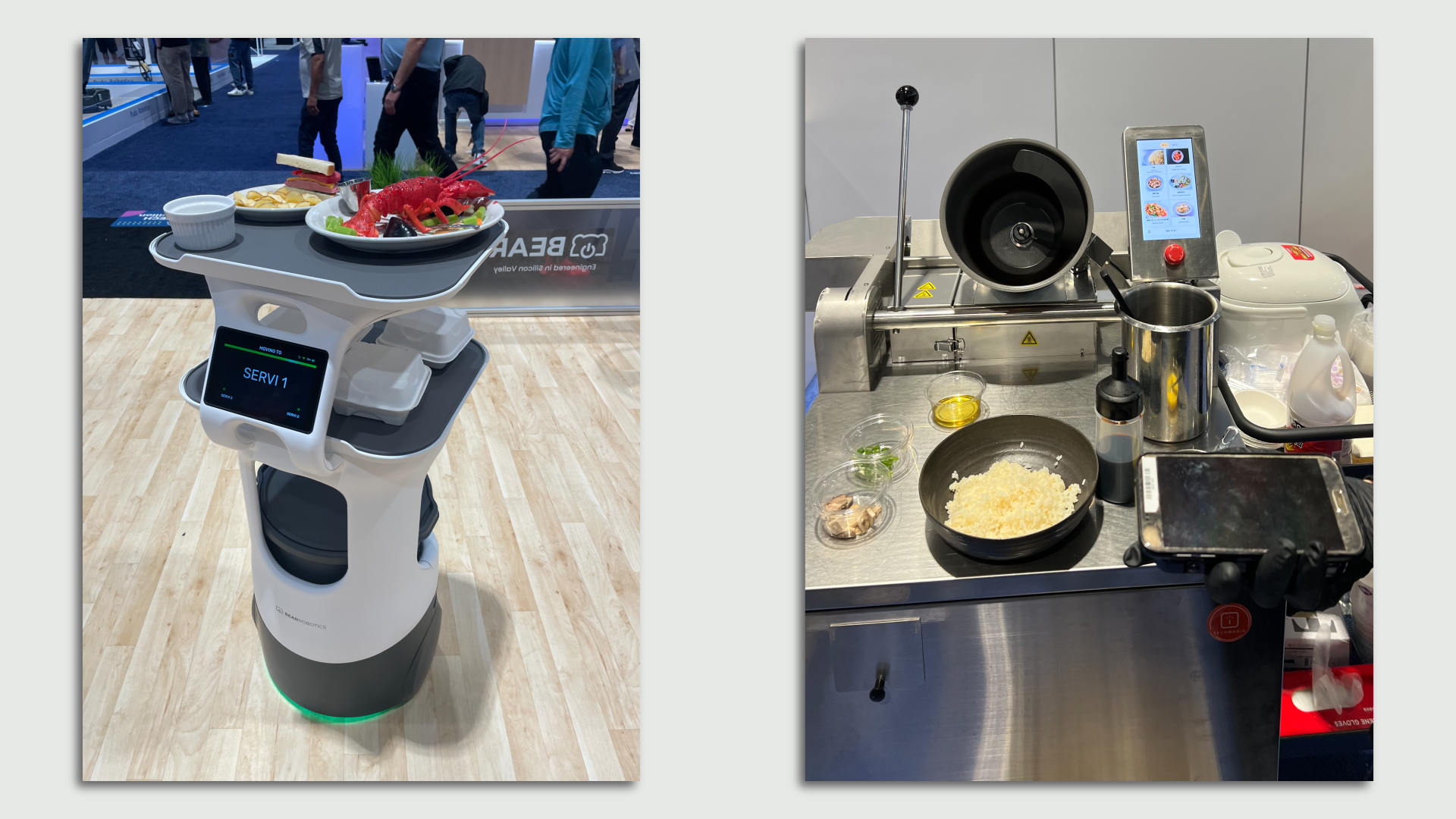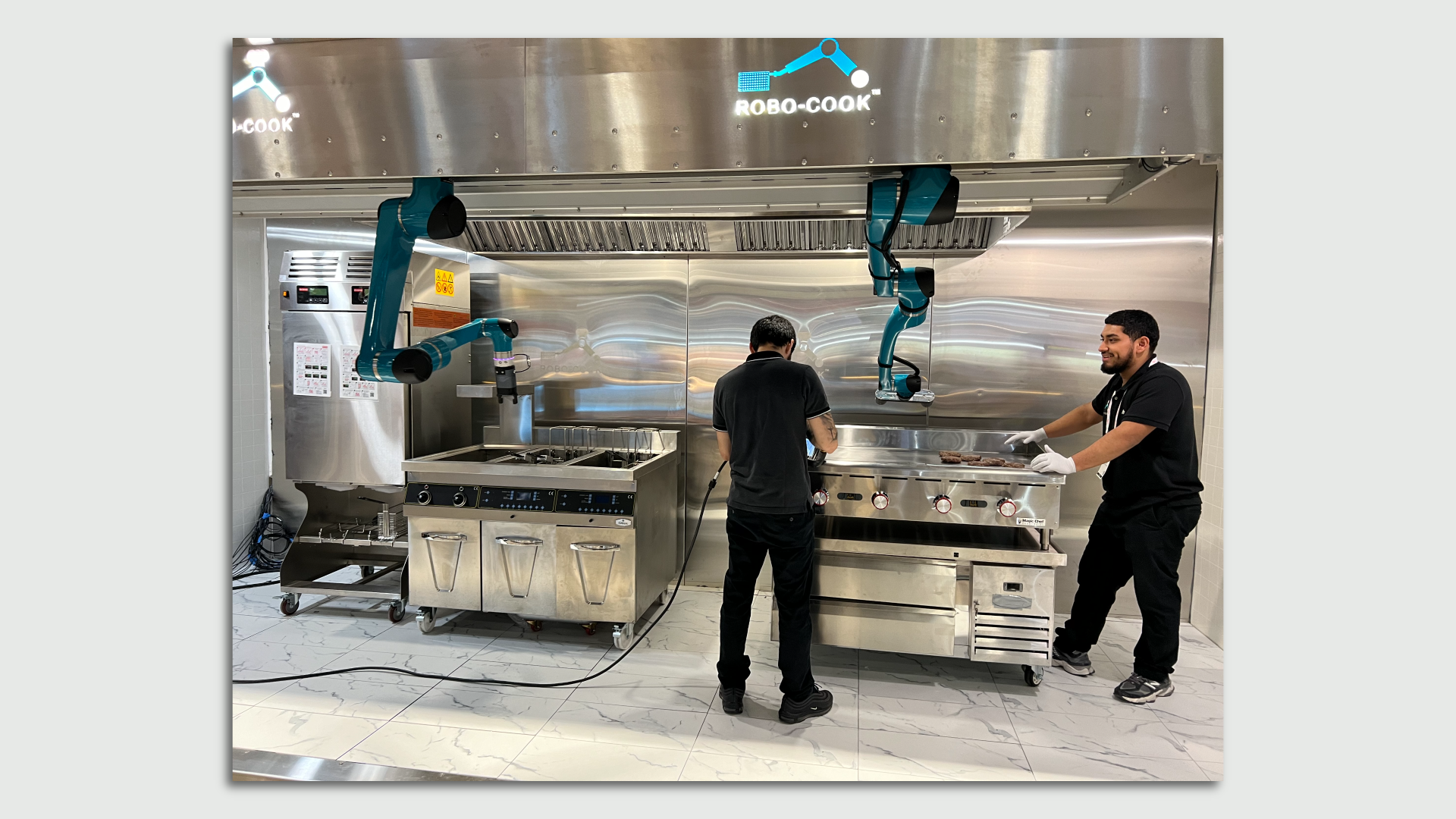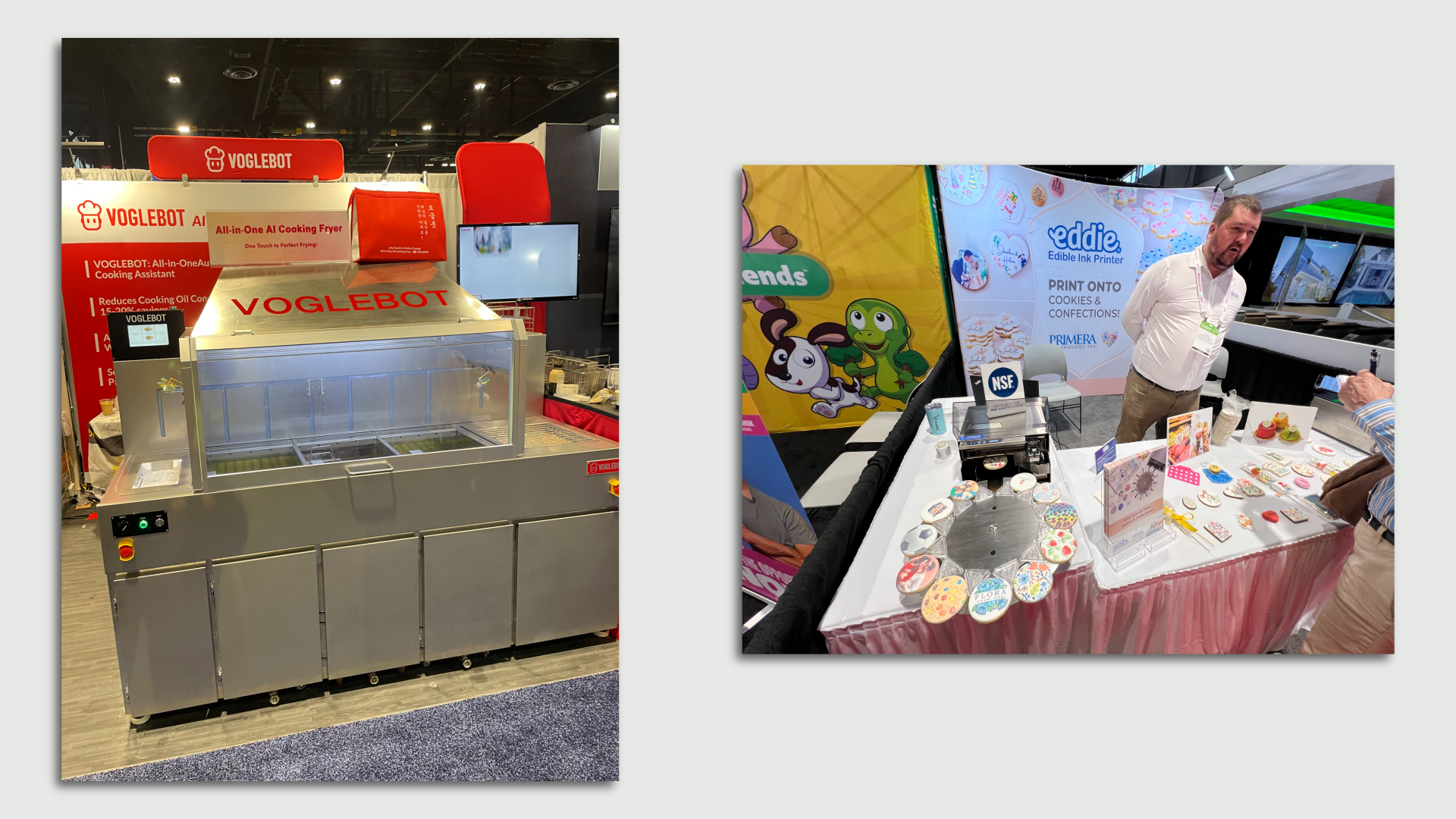Restaurants are placing significant, experimental bets on robots that can perform various tasks - from stir-frying and flipping burgers to mixing drinks, cooking ramen, baking pizza, delivering meals to diners, and even whisking away dirty dishes. However, these droids may still need to be ready for widespread, mainstream deployment.
The reason this matters is that the restaurant industry continues to grapple with worker shortages and inflation, even as it enjoys record sales. Robots, technology, and AI are potential solutions to boost efficiency and revenue for restaurants.
At the recent National Restaurant Association show in Chicago, tech companies heavily promoted their labor-saving robotic offerings. Some of the award-winning innovations included the "PizzaBot," which can accurately dispense expensive and labor-intensive toppings, the "I-Robo2" robotic stir-fry machine that can prepare 30 meals per hour, and the "Alpha Grill" which can cook 200 hamburger patties per hour and then clean itself.
While these robotic systems hold promise, the restaurant industry is still working to ensure the technology is ready for prime-time use across a wide range of establishments. Refining the capabilities and reliability of these systems will be crucial as restaurants seek solutions to their ongoing operational challenges.

Also on display were a ramen vending machine and an AI robot that can automatically season and package french fries, tater tots, and chicken fingers.
- And then there was Voglebot, which bills itself as an all-in-one automated fry cook that can simultaneously make fries, chicken fingers, etc. (See a video.)
Droids that trundle into the dining room to serve food — or take dirty plates back to the kitchen — were also on ample display.
- Examples include the 4-foot-tall Dinerbot from Keenon, which has three serving trays and can carry up to 88 pounds, and the Servi from Bear Robotics, which can carry two trays and a tub for used dishes.

How it works: The I-Robo stir-fry robot is being used in Japan, where one of the country's largest Chinese food chains has two or three in each of its kitchens, says manufacturer TechMagic.
- A touchscreen next to the stir-fry bowl pulls up a menu of recipes for a human cook to follow, such as fried rice or chicken with vegetables.
- It prompts the human to place the ingredients — oil, rice, vegetables, etc., some of them pre-measured — into the heated bowl.
- The bowl spins and rotates, mixing and heating the ingredients, creating a meal in 2-3 minutes. (See it cook kung pao chicken.)
- When finished, the unit cleans itself.
Yes, but: These first-generation machines are cool and futuristic, but some are prone to malfunction and other problems.
- They're often not as efficient or effective as the human hands and brains they replace.
Case study: A richly funded Silicon Valley pizza robotics company called Zume shut down last year, in part because it couldn't keep the cheese from sliding off the pizza as it progressed along the line.
What they're saying: "There's no doubt the future looks like more robotics in the kitchen," Michelle Korsmo, CEO of the National Restaurant Association, tells Axios.
- "It's a question of whether robotics are in the dining room itself," she said. "It depends a lot on the particular restaurant and what experience they're trying to bring."
- Restaurateurs, she said, "are excited about what technology can bring in learning more about their customers and making their businesses more efficient."
- And "the rise of technology in the dining experience is becoming increasingly a part of daily life for all customers."

Zoom out: Some big names in the restaurant industry are going all in on robotics.
- Sweetgreen in 2021 acquired a robotic food-prep startup called Spyce and, two years later, opened its own automated restaurant called Infinite Kitchen.
- The founder of Chipotle, Steve Ells, has started a vegan takeout chain called Kernel where the robots do most of the cooking.
Robot cooks and servers are showy baubles that may mask where restaurant technology is making the biggest impact: in back-end systems.
- New systems use AI to improve order-taking, inventory management, staff scheduling, and home delivery.
- AI-driven marketing and social media systems are helping restaurants reel in customers — and bring back regulars — with targeted promotional offers for people's favorite dishes and other specials.

The use of more sophisticated apps has allowed diners to customize their meals more than ever before. "Regardless of any resistance to QR codes, customers are comfortable with and want these options," said Korsmo. "And we're talking about customers of all ages."
An interesting trend is the rise of "dashboard dining," where more consumers are eating their meals in their cars. A lot of innovation is happening at the drive-thru, where AI voice bots take your order and even make recommendations on what to order.
However, the human element is still an important part of the dining experience. As Korsmo noted, "There's no doubt that technology can only go so far. What makes a restaurant great and what attracts people to come to restaurants is that 'high touch' aspect" - interacting with a helpful server or charming maitre d'.
The bottom line is that while technology has expanded customization and convenience options for diners, the personal touch of human interaction remains a key part of the appeal of dining out.

